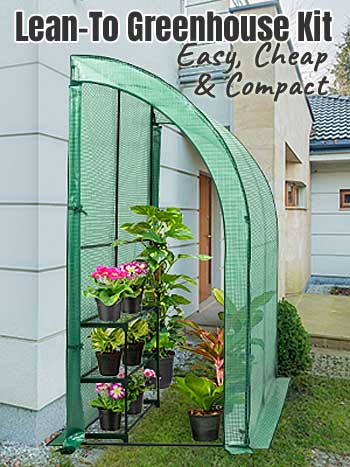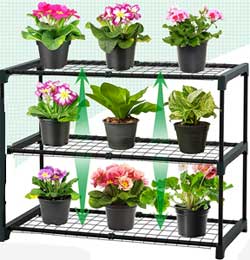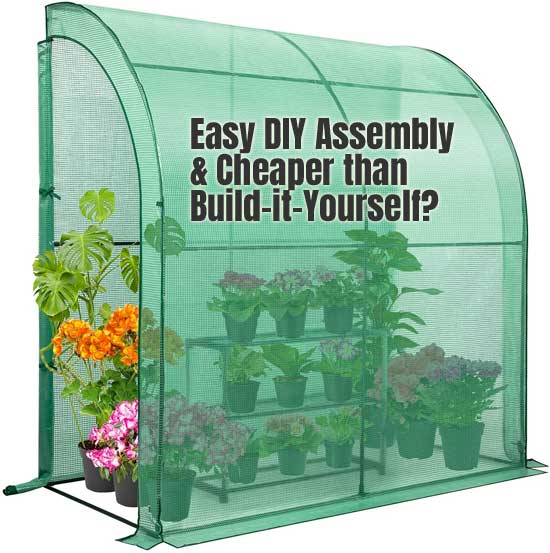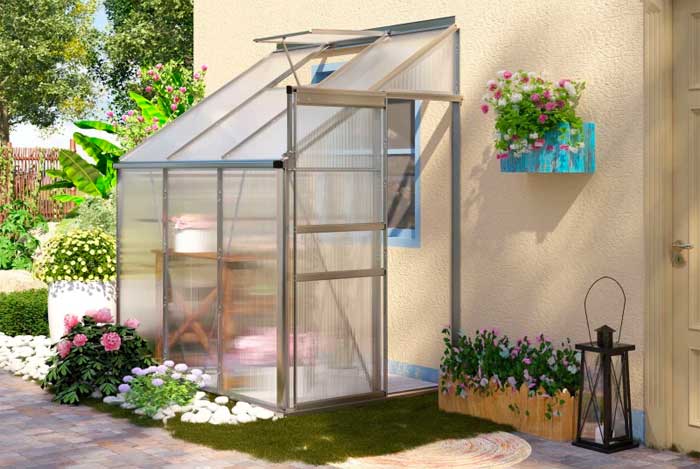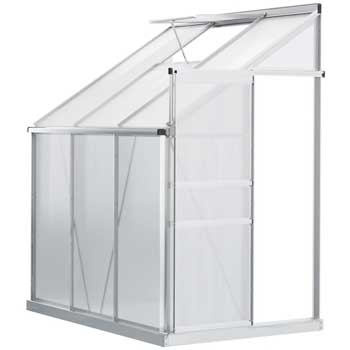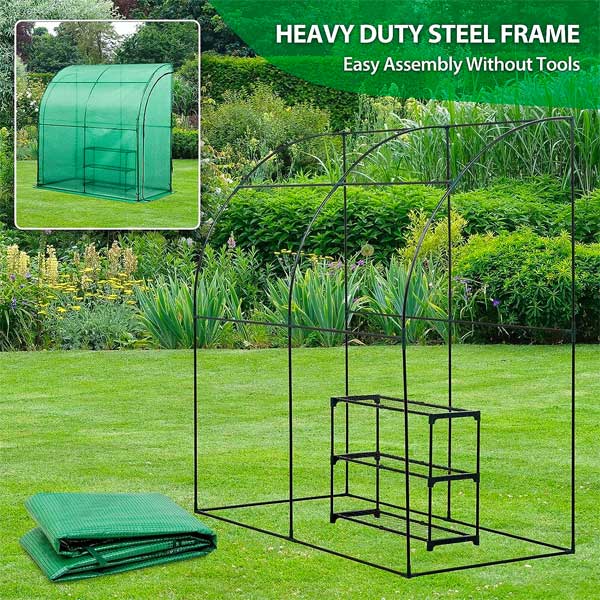A DIY lean-to greenhouse kit makes a great option for garden enthusiasts.
These kits provide all the materials and instructions needed to build your own greenhouse, allowing you to grow plants year-round.
What is a Lean-to Greenhouse?
In short, a lean-to greenhouse is a structure attached to an existing building. It has a sloping roof designed to maximize sunlight, utilize the building’s insulation and fit in small spaces. With it, you can extend your growing season and have a controlled environment to grow plants.
How to Set Up an Attached Walk in Greenhouse:
You can actually assemble this mini greenhouse in minutes. Plus, set up doesn’t require any tools. Just connect the frame pieces together and attach the cover to the frame.
In addition, the package does come with bolts, guy lines and stakes, so you can secure the frame to the wall, fence or ground. Alternatively, you can set it up as a temporary greenhouse or move it as needed. The structure weighs less than 20 pounds.
The narrow structure is tall enough so that you can comfortably walk through it. However, it doesn’t take up a lot of ground space (only about 23 square feet).
Therefore, you can assemble your greenhouse in a side yard, next to your garage or even along a fence without it getting in the way. Plus, it fits well in urban homes that don’t have large backyards.
Is this Low-Cost Greenhouse Kit
Better than Building One Yourself?
Opting for a wall greenhouse kit is an affordable and hassle-free way for those interested in home vegetable gardening without a hefty investment. With a starting price around $100, these kits include the entire frame and canopy, complemented by a 3-tier plant rack.
It might even prove more cost-effective than crafting a garden room from scratch, considering the effort to source a design plan, purchase materials, and the construction time required.
Extend the growing period for your plants or grab the opportunity have a year-round garden. With its taller height and walk-in design, you can actually fit quite a few plants in this plant house.
The Pros & Cons of an Eagle Peak Wall Greenhouse:
Although this lean to structure has several advantages, it does come with a few downsides too. First of all, it’s small and is not ideal for a large garden or large plants. Plus, its smaller size makes it less versatile as far as what you can grow in it.
Second, the lightweight frame and canopy are not designed for snowy or windy climates. Although the attached wall or fence can offer some protection from wind, it will not stand up to environmental factors as well as a wooden frame or aluminum and polystyrene structure.
Comprehensive Guide to Buying or Building a Wall-Attached Nursery
If I may say so, lean-to greenhouses are pretty darn convenient, but let me help by answering some questions before you actually decide to buy one…
Benefits of a Lean-To Greenhouse
1. Space Efficiency: Lean-to greenhouses are designed to be attached to an existing structure, such as a house or garage, making efficient use of space in your backyard. This proximity allows for easy access and convenience.
2. Cost-Effective: Lean-to greenhouses often require fewer materials, as one side is attached to an existing building, reducing construction costs compared to freestanding options.
3. Optimal Light Exposure: Due to their orientation, lean-to greenhouses maximize sunlight exposure, helping plants thrive with natural light. This can lead to healthier growth and higher yields.
4. Stability and Support: Being attached to a sturdy structure, lean-to greenhouses benefit from the support and stability provided by the building they are attached to, reducing the risk of damage in inclement weather.
Ready-Made Kit or DIY: Which is Better?
Deciding between purchasing a ready-made lean-to greenhouse kit or building one from scratch depends on your skills, budget, and time:
Ready-Made Kit: Kits are convenient and typically include all necessary materials and instructions. For instance, the Palram Nature Series Lean-To Greenhouse Kit comes with polycarbonate panels, a rust-resistant frame, and built-in gutters. It’s a great option for those seeking an easier, faster setup.
Alternative: Building from scratch offers more customization but requires planning, construction skills, and sourcing materials individually.
Determining the Right Size
The size of your lean-to greenhouse should consider your gardening needs and available space. Measure the area where you intend to install it and assess the types and quantity of plants you plan to grow. The Rion Grand Gardener Greenhouse, for example, offers a range of sizes to accommodate various gardening goals.
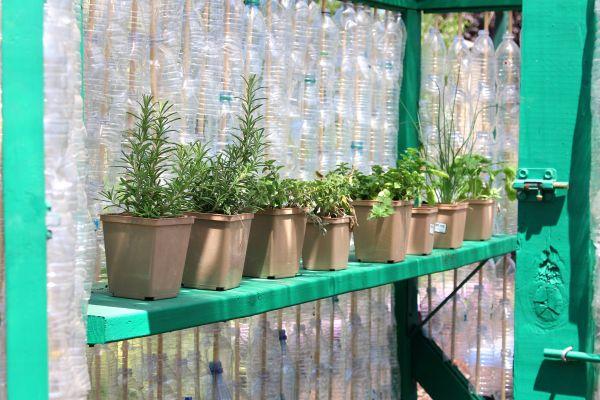
Materials Needed to Build a Greenhouse:
Typically, lean-to greenhouses include materials like:
- Frame: Made of materials such as aluminum or steel.
- Panels: Transparent or semi-transparent panels like polycarbonate for walls and roof.
- Doors: A hinged or sliding door for access.
- Vents: Roof vents for ventilation.
- Hardware: Nuts, bolts, and anchors for assembly.
Assembling a DIY Greenhouse Kit:
Assembling a kit requires basic tools like a screwdriver, wrench, and ladder. Follow the provided instructions carefully, and consider enlisting the help of a friend for larger kits. Check the Palram Hybrid Lean-To Greenhouse Kit for an example of straightforward assembly.
Alternatively, you can opt for a tool-free assembly with something like the lean-to greenhouse below:
Greenhouse Customization:
Many lean-to greenhouse kits offer some degree of customization in terms of size and accessories like shelving and automatic vent openers. However, building from scratch allows for complete customization of design and materials.
Foundation & Support Structure:
A sturdy foundation is essential. A common choice is to attach the greenhouse to a concrete slab or secure it to a deck. The foundation should support the weight of the greenhouse and withstand environmental conditions.
Securing to a Building
Attach the lean-to greenhouse securely to the side of your house or another structure using appropriate brackets and fasteners. Ensure a proper seal to prevent heat loss and moisture infiltration.
Optimal Plants & Growing Conditions:
Lean-to greenhouses can support a variety of different plants, including vegetables, herbs and flowers. And to optimize conditions even more, check out a temperature-regulating device like the Palram Automatic Roof Vent Opener and proper shelving for organized growing.
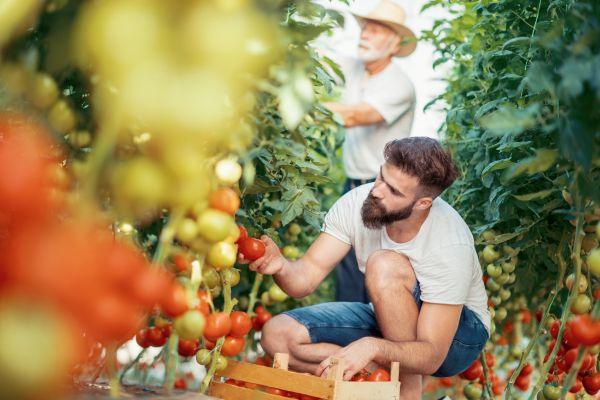
Climate & Insulation for Plants:
If your lean-to greenhouse is attached to your house, it may benefit from the house’s insulation. However, ensure the greenhouse has its own temperature control system and adequate ventilation to prevent overheating during hot seasons.
Ventilation and Temperature Control:
Proper ventilation is crucial to prevent overheating. Use roof vents and sidewall vents as needed. Additionally, consider a temperature-controlled vent opener for convenience.
Greenhouse Costs & Ongoing Expenses:
Costs vary widely, depending on size, material quality, labor, etc.. In addition, you don’t want to overlook routine expenses like heating, cooling,and maintenance that can add up in colder, less protected locations.
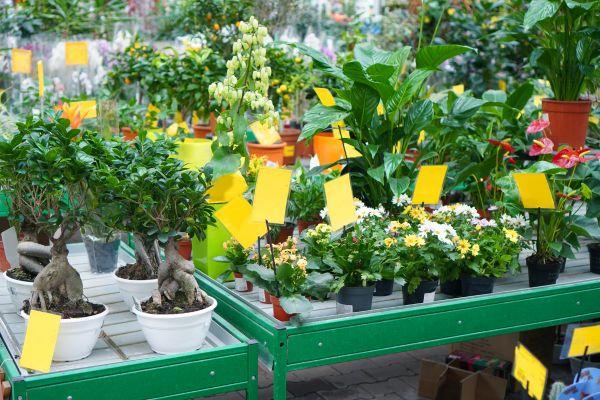
Permitting and Zoning for Backyard Structures:
Check local regulations before you start construction, for any permanent structures on your property. Some areas may have restrictions on the size or location of such structures, so don’t forget to check!
In conclusion, a lean-to greenhouse provides an efficient, economical, and luminous environment for domestic gardening endeavors. Choosing either a preassembled kit or constructing one yourself, meticulous planning, precise assembly, and regular upkeep are key to achieving a fruitful and satisfying year-round gardening journey.
Last Updated April 23, 2024

